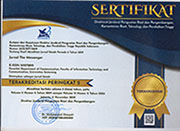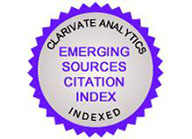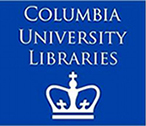Understanding Multiculturalism in a Family on Whatsapp Group in the Disruption Era
Abstract
Keywords
Full Text:
PDFReferences
Ang, S., Dyne, L. V., & Rockstuhl, T. (2015). Cultural intelligence: Origins, conceptualization, evolution, and methodological diversity. In M. J. Gelfand, C.-Y. Chiu, & Y.-Y. Hong (Eds.), Handbook of Advances in Culture and Psychology Volume 5 (pp. 273 324). New York: Oxford University Press.
Anisa, R. (2018). Studi Deskriptif Tentang Loyalitas Peserta Grup Whatsapp. Sosioglobal: Jurnal Pemikiran Dan Penelitian Sosiologi, 2(1), 32 39.
Arif, M. C. (2012). ETNOGRAFI VIRTUAL, Sebuah Tawaran Metodologi Kajian Media Berbasis Virtual. Jurnal Ilmu Komunikasi, 2(2), 165 179.
Bhakti, A. H., Paradisa, I., Alkaf, I., & Irwansyah. (2018). Pengaruh Media Sosial Terhadap Pengalaman Multikultural dan Kecerdasan Budaya. Jurnal MetaKom, 2, 1 21.
Chen, G.-M., & Zhang, K. (2010). New media and cultural identity in the global society. In R. Taiwo (Ed.), Handbook of Research on Discourse Behavior and Digital Communication: Language Structures and Social Interaction. New York: Information Science Reference.
Chua, R. Y. J. (2018). Innovating at Cultural Crossroads: How Multicultural Social Networks Promote Idea Flow and Creativity. Journal of Management, 44(3), 1119 1146. https://doi.org/https://doi.org/10.1177/0149206315601183
Chung, J. E., Conlin, L., Bissell, K., Fardouly, J., Vartanian, L. R., Farhangi, A. A., & Simmons, N. (2015). The Impact of New Social Media on Intercultural Adaptation. Body Image, 29(3), 1 30. https://doi.org/https://doi.org/10.1080/10410236.2012.741668
Dom nguez, D., Beaulieu, A., Estatella, A., Gomez, E. G., Schnettler, B., & Read, R. (2007). Virtual Etnography. Forum: Qualitative Social Research for Schung, 8(3). Retrieved from http://nbn-resolving.de/urn:nbn:de:0114-fqs0703E19
Firat, M., & Yurdakul, I. K. (2011). Virtual Ethnography Research on Second Life Virtual Communities. Turkish Online Journal of Distance Education, 12(3), 108 117.
Hafiar, H. (2012). Problematika Atlet Penyandang Cacat, Studi Komunikasi Mengenai Kompleksitas Komunikasi Atlet Penyandang Cacat. Bandung: UNPAD Press.
Hendrawan, A. (2019). Generasi Z Vis-a-Vis Era Disrupsi. In 2019. Retrieved from https://www.academia.edu/36750474/Generasi_Z_Vis-a-Vis_Era_Disrupsi
Khalid, A. (2017). Impact of Internet on Social Connections in Family System: A Survey Study of Residents in Lahore. Arts and Social Sciences Journal, 8(3), 1 6. https://doi.org/10.4172/2151-6200.1000270
Latif, S. (2017). Kecerdasan Budaya Mahasiswa calon Konselor. Jomsign: Journal of Multicultural Studies in Guidance and Counseling, 1(1), 139 148.
Nasrullah, R. (2017). Etnografi Virtual, Riset Komunikasi, Budaya, dan Sosioteknologi di InternetNo Title. Bandung: Simbiosa Rekatama Media.
Piechota, G. (2015). The Role of Social Media in Creating Intercultural Dialogue and Overcoming Prejudice a Comparative Analysis of Pilot Survey Results. KOME, 2(2). https://doi.org/https://doi.org/10.17646/kome.2014.24
Rachmaniar, & Anisa, R. (2017). Studi Deskriptif Tentang Loyalitas Peserta Grup WhatsApp. Sosiogobal: Jurnal Pemikiran Dan Penelitian Sosiologi, 2(1), 32 39.
Satyadewi, A. J., Hafiar, H., & Nugraha, A. R. (2017). Pemilihan Akun Media Sosial INSTAGRAM oleh HOLIDAY INN Bandung. Jurnal The Messenger, 9(2), 153 162. Retrieved from https://doi.org/10.26623/themessenger.v9i2.459
Sawyer, R., & Chen, G. M. (2012). The Impact of Social Media on Intercultural Adaptation. Intercultural Communication Studies, 21(2), 151 169. Retrieved from http://digitalcommons.uri.edu/com_facpubs
Simbolon, D. (2012). Memahami Komunikasi Beda Budaya Antara Suku Batak Toba dengan Suku Jawa di Kota Semarang. Jurnal The Messenger, 4(2), 43 49. Retrieved from https://doi.org/10.26623/themessenger.v4i2.159
Sugiyono, P. (2010). Metode penelitian pendidikan:(pendekatan kuantitatif, kualitatif dan R & D). Bandung: CV Alpabeta.
Taiwo, R. (2010). Handbook of Research on Discourse Behavior and Digital Communication: Language Structures and Social Interaction. New York: Information Science Reference.
Watie, E. D. S. (2011). Komunikasi dan Media Sosial. Jurnal The Messenger, 3(2), 69 75. Retrieved from http://dx.doi.org/10.26623/themessenger.v3i2.270
Yeke, S., & Semerci ¶z, F. (2016). Relationships between personality traits, cultural intelligence and intercultural communication competence. Procedia - Social and Behavioral Sciences, 235, 313 319.
Yusuf, O. (2016, April 13). Angka Fantastis Facebook Messenger dan WhatsAp. 13 April 2016. Retrieved from https://tekno.kompas.com/read/2016/04/13/13160107/Angka.Fantastis.Facebook.Messenger.dan.WhatsApp.
DOI: http://dx.doi.org/10.26623/themessenger.v11i2.1267
Refbacks
- There are currently no refbacks.
Copyright (c) 2019 Jurnal The Messenger
View My Stats [Jurnal The Messenger] is an International Scientific Journal, Published by the Department of Communication, Faculty of Information Technology and Communication, Universitas Semarang (Central Java, Indonesia). It is licensed under a Creative Commons Attribution 4.0 International License.



_11.jpg)




_BARCODE.jpg)
_BARCODE1.jpg)



5.png)










2.png)





